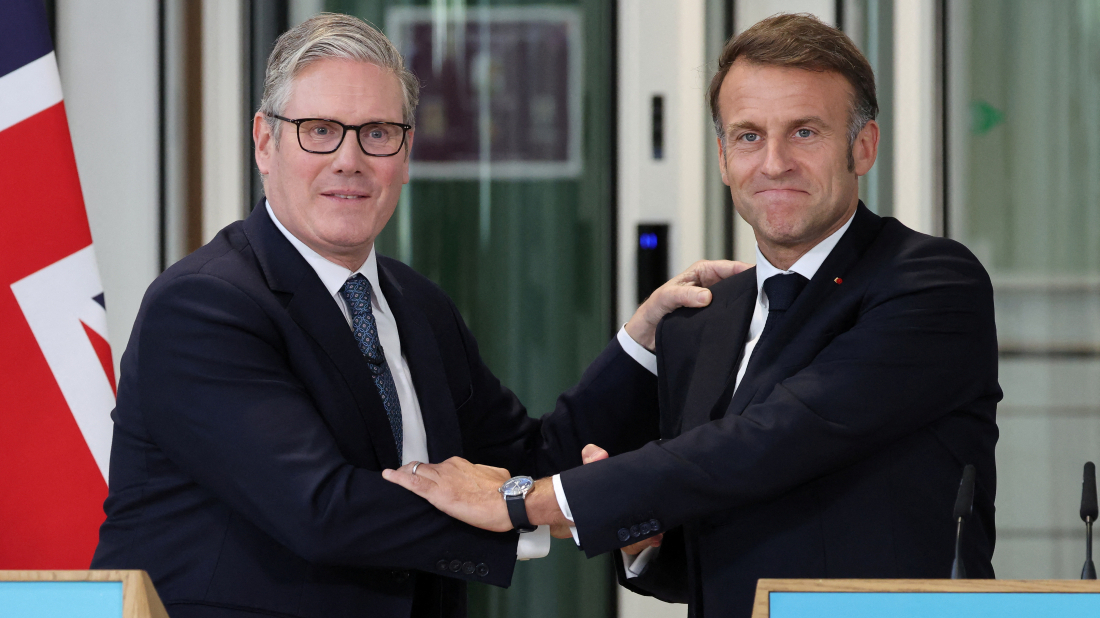live Trump says Ukraine peace talks ‘very close’ after Florida meeting with Zelenskyy
U.S. President Donald Trump said on Sunday that negotiations with Ukrainian President Volodymyr Zelenskyy to end the Russia-Ukraine war were “gettin...

British Prime Minister Keir Starmer led a virtual meeting which included over 30 international leaders on Tuesday morning of what is known as ‘coalition of the willing’.
In the meeting, he updated the parties on the outcome of peace talks in Washington on Monday night with regards to Ukraine and Russia.
He also outlined next steps which include planning further meetings with US counterparts and focusing on plans to deliver robust security guarantees in the event of a ceasefire.
There were also discussions on the possibility of further pressure on Russia - through sanctions to persuade a more serious commitment to ending the war from President Putin.
Who is the ‘Coalition of the willing’?
The term “coalition of the willing” has loosely come to mean a temporary alignment or union of countries to achieve a common goal, typically military or political in nature.
It was first used by President Bill Clinton in 1994 at the height of an international stand off with North Korea over its nuclear activities.
It was then used again by President George Bush in 2002 as he rallied for support for the US-led Multi-National Force which invaded Iraq in 2003 invasion.
Much more recently, a new coalition of the willing has been formed to include thirty one countries who have pledged unwavering support for Ukraine against Russian aggression.
The “coalition” and the Russia - Ukraine war
Earlier in the year, in March, Czech President Petr Pavel called for the formation of a coalition of the willing to end the Russian invasion of Ukraine in a post made on X.
This was followed by British Prime Minister Keir Starmer repeating the sentiment after an International summit of European leaders hosted in London to garner support from Ukraine.
Since then, the UK and France have spearheaded efforts as “the coalition of the willing” in ending the war in Ukraine.
Since its formation, the coalition has held up to five high level meetings and one virtual meeting in London, Kyiv and France respectively.
Starmer broke down the major objectives of the meeting into four key points:
Commitment to maintaining the flow of military aid to Ukraine while increasing economic pressure on Russia through sanctions and other measures.
Affirming that any lasting peace agreement must ensure the sovereignty and security of Ukraine, with Ukraine being present at all peace negotiations.
Pledging to enhance Ukraine's defensive military capabilities following any peace deal to deter potential future invasions.
Development of a "coalition of the willing" consisting of multiple countries prepared to defend the terms of any peace agreement and guarantee Ukraine's security afterwards.
Since then, moves have been made to set up a joint peace keeping force to be deployed to Ukraine in the event of a ceasefire.
What countries are involved?
Countries included in the current coalition include UK, France, Ukraine Belgium, Bulgaria, Croatia, Cyprus, the Czech Republic, Denmark, Estonia, Finland, Germany, Greece, Iceland, Ireland, Italy, Latvia, Lithuania, Luxembourg, the Netherlands, Norway, Poland, Portugal, Romania, Slovenia, Spain, Sweden and Turkey.
The European Union and NATO are also non state parties to the coalition.
British Prime Minister Keir Starmer had mentioned Japan and New Zealand as part of the coalition, however both countries did not attend an all important meeting in Paris in March.
New York placed the state under emergency measures on Friday as a powerful winter storm brought the heaviest snowfall since 2022, disrupting travel across the north-east of the United States.
A 7.0 magnitude earthquake struck offshore near Taiwan’s north-eastern county of Yilan late on Saturday, shaking buildings across the island, including in the capital Taipei, authorities said.
Brigitte Bardot, the French actress whose barefoot mambo in And God Created Woman propelled her to international fame and reshaped female sexuality on screen, has died at the age of 91, her foundation said on Sunday.
Iran is engaged in a “comprehensive war” with the United States, Israel, and Europe, Iranian President Masoud Pezeshkian stated on Saturday.
Japan’s tourism sector has experienced a slowdown after China’s government advised its citizens to reconsider travel to Japan, following remarks by Prime Minister Sanae Takaichi regarding Taiwan.
Chinese Foreign Minister Wang Yi hosted Cambodian Foreign Minister Prak Sokhonn and Thai Foreign Minister Sihasak Phuangketkeow in Yunnan province on Sunday, following a ceasefire that ended nearly three weeks of clashes along the Cambodia-Thailand border.
More than 1,200 people have been newly displaced in Sudan’s South and North Kordofan states due to escalating insecurity, the International Organisation for Migration (IOM) reported on Sunday.
Torrential rainfall across southern and eastern Spain over the weekend has left one person dead and two others missing, authorities said on Sunday evening, as overflowing riverbeds swept away vehicles and officials urged residents to stay indoors.
Türkiye on Sunday denied reports that a Turkish Airlines passenger flight diverted from Libya due to fears of retaliation following a Libyan military delegation plane crash near Ankara.
Gaziantep’s Panorama 25 December Museum, which commemorates the city’s resistance during Türkiye’s War of Independence, continues to attract strong public interest, with nearly 1.5 million visitors recorded in the five years since it opened.
You can download the AnewZ application from Play Store and the App Store.

What is your opinion on this topic?
Leave the first comment